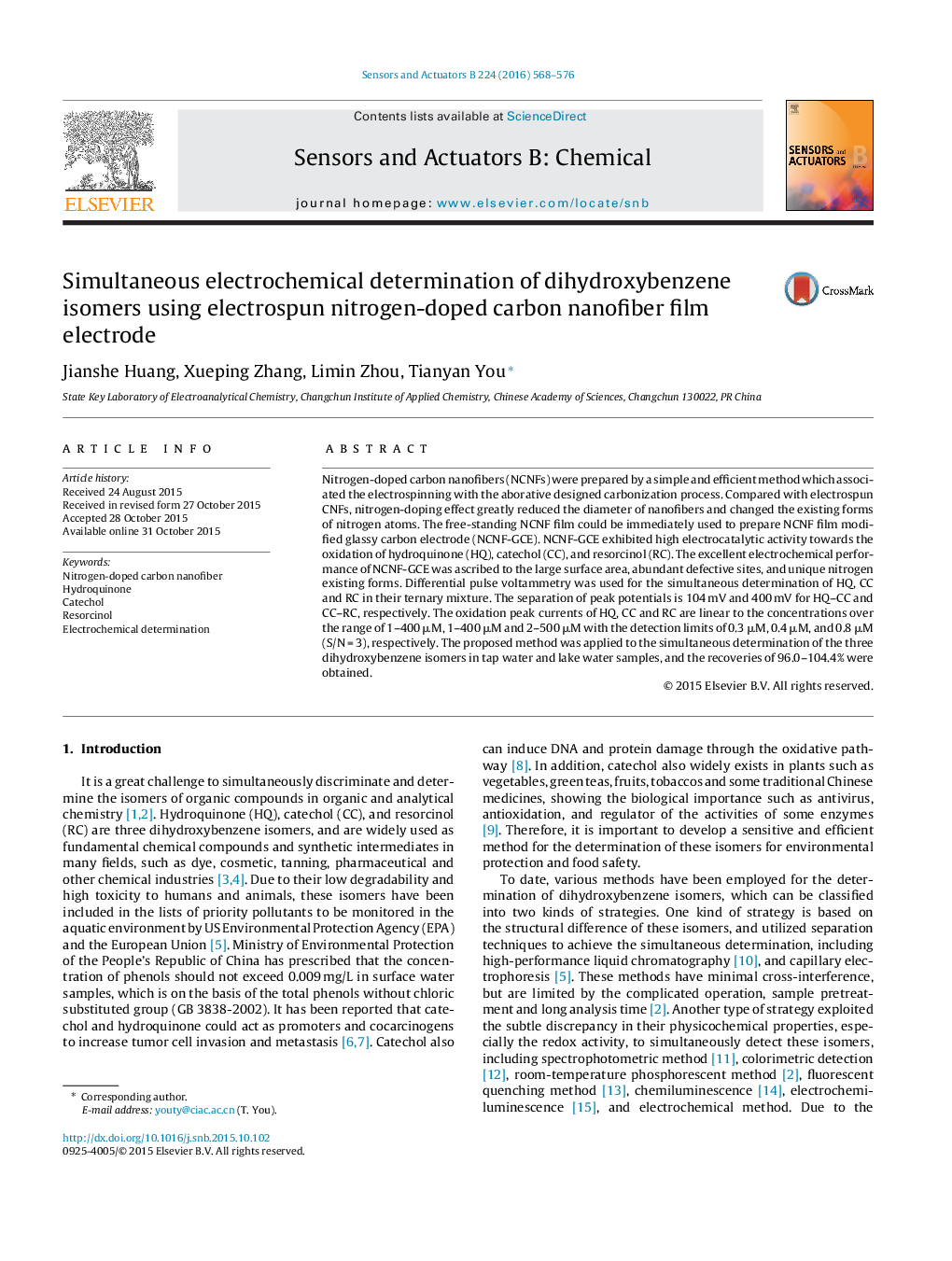| Article ID | Journal | Published Year | Pages | File Type |
|---|---|---|---|---|
| 750524 | Sensors and Actuators B: Chemical | 2016 | 9 Pages |
•NCNF film was prepared by electrospinning and the designed carbonization process.•NCNFs showed unique N-existing form, small diameter and abundant defective sites.•NCNF-GCE exhibited high electrocatalytic activity towards dihydroxybenzene isomers.•The simultaneous determination of the three dihydroxybenzene isomers was achieved.
Nitrogen-doped carbon nanofibers (NCNFs) were prepared by a simple and efficient method which associated the electrospinning with the aborative designed carbonization process. Compared with electrospun CNFs, nitrogen-doping effect greatly reduced the diameter of nanofibers and changed the existing forms of nitrogen atoms. The free-standing NCNF film could be immediately used to prepare NCNF film modified glassy carbon electrode (NCNF-GCE). NCNF-GCE exhibited high electrocatalytic activity towards the oxidation of hydroquinone (HQ), catechol (CC), and resorcinol (RC). The excellent electrochemical performance of NCNF-GCE was ascribed to the large surface area, abundant defective sites, and unique nitrogen existing forms. Differential pulse voltammetry was used for the simultaneous determination of HQ, CC and RC in their ternary mixture. The separation of peak potentials is 104 mV and 400 mV for HQ–CC and CC–RC, respectively. The oxidation peak currents of HQ, CC and RC are linear to the concentrations over the range of 1–400 μM, 1–400 μM and 2–500 μM with the detection limits of 0.3 μM, 0.4 μM, and 0.8 μM (S/N = 3), respectively. The proposed method was applied to the simultaneous determination of the three dihydroxybenzene isomers in tap water and lake water samples, and the recoveries of 96.0–104.4% were obtained.
Graphical abstractFigure optionsDownload full-size imageDownload as PowerPoint slide
